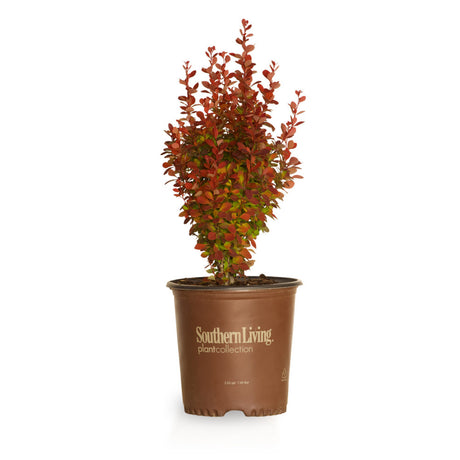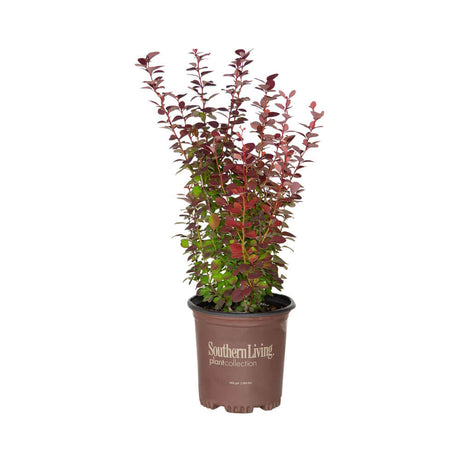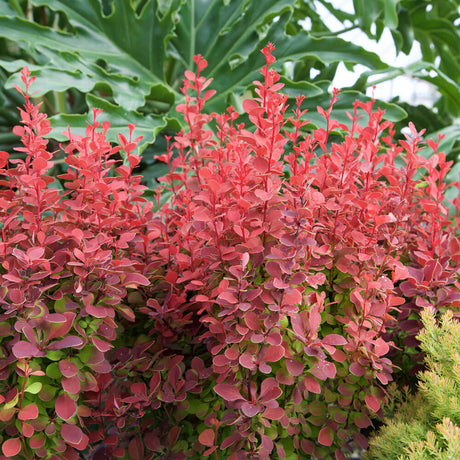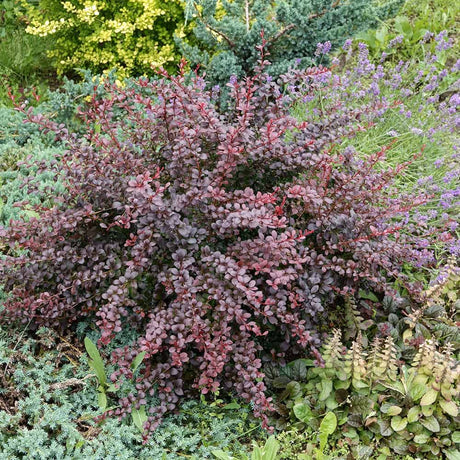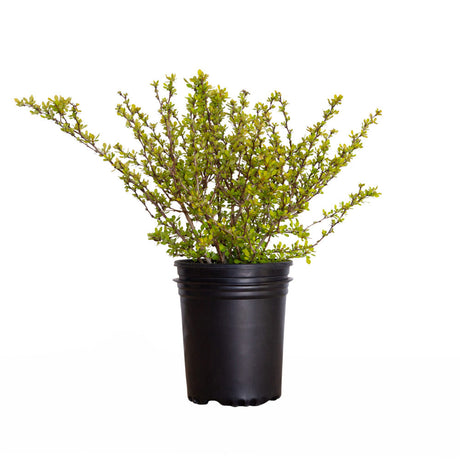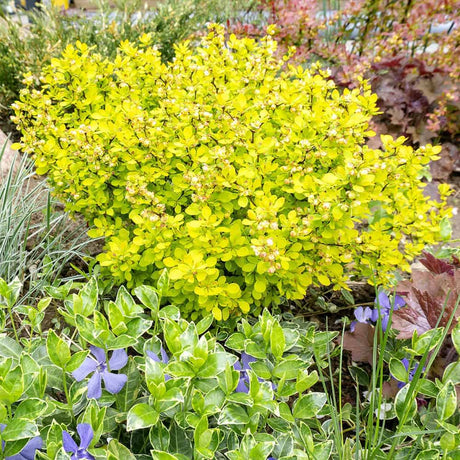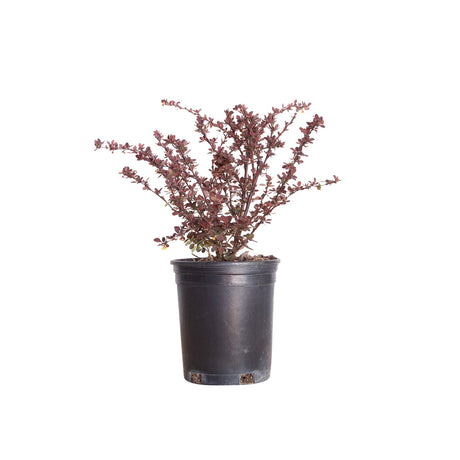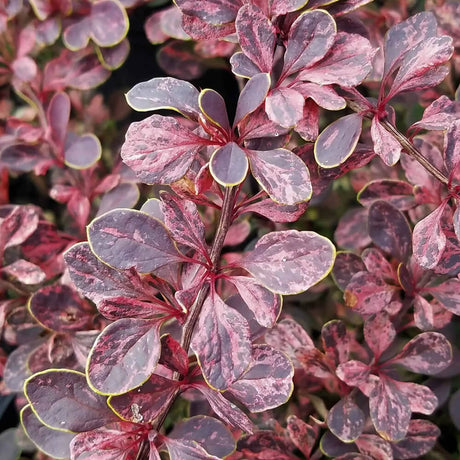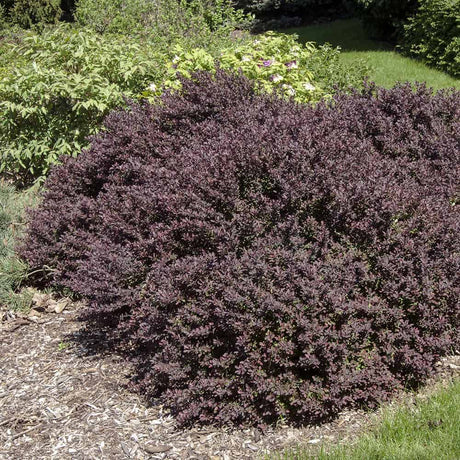Southern Living Plant Collection
(57)From $19.98Unit price /UnavailableIn stock (2920)Flowerwood
Crimson Pygmy Barberry Japanese Dwarf
(3)From $19.99Unit price /UnavailableIn stock (155)
Why Grow Barberry Bushes?
There are several great reasons to plant a few Barberries in your landscape.They have dynamic and bold foliage color
Barberry shrubs come in various colors, but their warm colors make them shine. They have rich ruby red to fiery crimson hues, as well as brilliant yellow and lime-green shades. Therefore, they're perfect for any gardener that wants to add some extra color to their landscape.
They're deer-resistant
Many Barberries have sharp thorns. These aren't great if you're trying to handle the plant, but they are great if you have a deer problem in your landscape. Deer do not care for chewing on these thorns (as you might imagine), which makes these plants some of the most deer-resistant shrubs that one can grow.
Barberry shrubs are known for their low-maintenance nature
Most popular varieties have a highly moderated and predictable growth habit. So pruning is unusual or unnecessary depending on the variety and how you want to use them. They also don't need much, if any, fertilizer. So they're great for gardeners that don't want to provide a lot of supplementary care.Where Should I Plant Them?
Barberries are not very picky when it comes to their planting location. Usually just ensuring a couple of things will help set them up for success.-
They need good drainage.
- These plants don't respond well to standing water in their planting location. They are often used in Xeriscape (dry, rocky) gardens because of their low-water requirements. They still need supplementary water after they're first planted though, to prevent them from drying out.
- This means you should avoid heavy clay soil and low points in the landscape. If you try to plant in clay soil, mix in pine bark to the soil at a ratio of about 1:1.
-
They need Full Sun to Partial Sun exposure
- These plants aren't recommended for shady plantings. They need over 3 hours of direct sun to produce dense and colorful foliage.
When is the Best Time to Plant?
Mid-spring and early Fall are the best times to plant because of the mild temperatures. Most gardeners can plant during either of these times successfully.USDA Zones 7b and Below:
In these cooler areas, we recommend planting in mid to late spring. This will allow your plant plenty of time over the season to get established before winter. We still recommend covering your plants overnight during hard freezes to help ensure your plant’s survival.USDA Zones 8a and Up:
In these warmer areas, early fall is a better time to plant than spring. This is because your plant will be mostly safe from the extreme summer heat. It will also have time to grow into your landscape before the next hot summer rolls around.How to Plant Barberries:
- First, find your planting spot (or spots) and dig a hole three times as wide as the pot that your plant came in.
- The hole should only be deep enough that the top of the plant’s root ball is level with or an inch or two above the ground around it.
- Mix your native soil with average garden soil to provide additional nutrients for your growing plant.
- Place your plant in the hole and fill it back up with your soil mixture.
- Gently tamp the soil down with your hands or feet once the hole is full. Don't pack the soil down too hard, though.
- Drench the new planting with a hose to help the soil and plant get situated.
Popular Companion Plants:
There are quite a few different plants that you can pair with these iconic beauties to get the most out of them in your landscape.- Pair them with evergreen trees to ensure foliage in your landscape all year long. Two that shine with Barberry leaves are the Dwarf Alberta Spruce and Forever Goldy Arborvitae.

